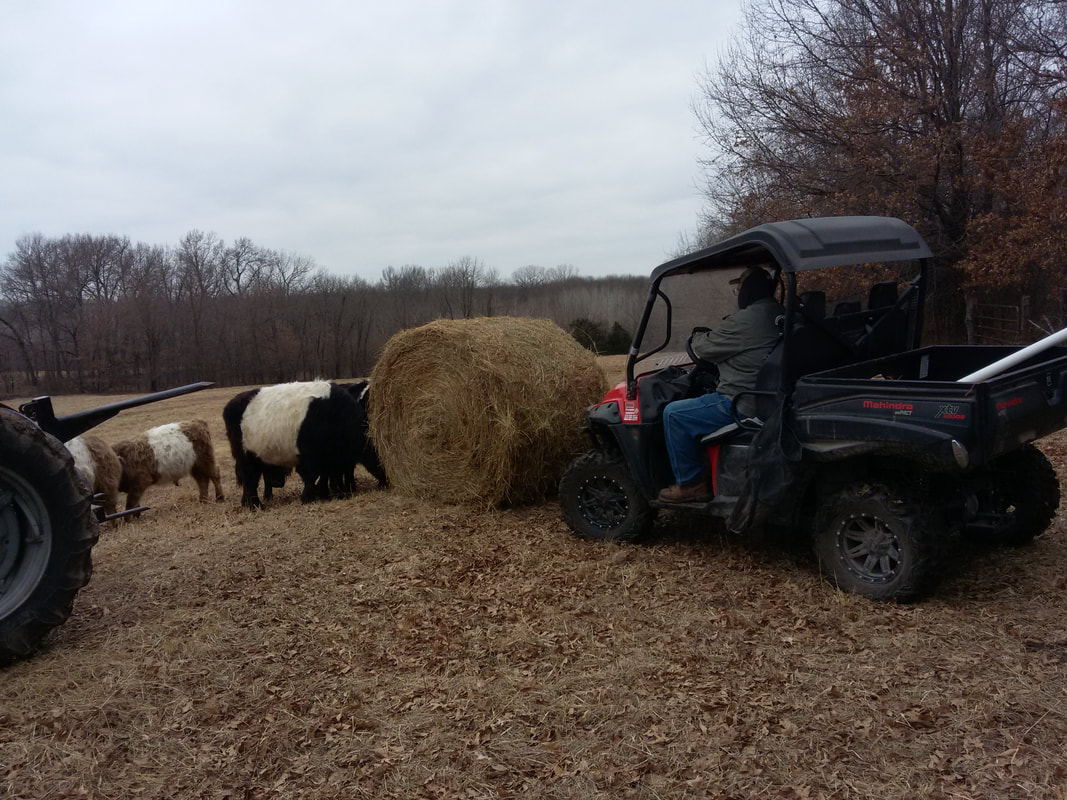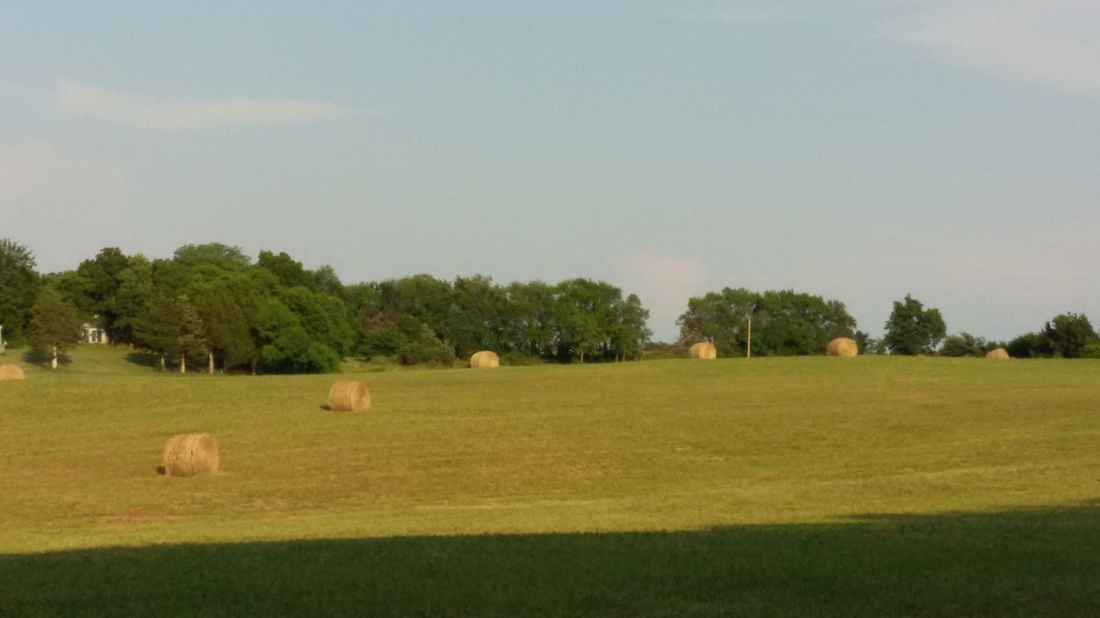|
Now is the time to reserve your 1/4 of a steer for spring butcher. You get to choose how it is processed and packaged and you pay the processor. We do on farm kill to minimize the stress on the animal which helps to maintain the delicious natural flavor of the grass-finished Beltie beef. Check out the current prices on the Cattle page.
0 Comments
Without the hay unroller we had to improvise and push the bale downslope with the UTV. Cows, calves, steers, and bulls got fed.
Would you like to buy a Christmas present for family or friends who have everything? Or maybe you just want to enjoy a holiday meal with some great local food? Check off your holiday shopping and support a family farm at the same time! We have the following products available from our small family farm. Delivery is available on campus or in Warrensburg through Saturday, December 23, 2017 for Christmas 2017.
Email us at this address or at [email protected]. Call/text 660-441-1976.  Our farm, like many others, has aging farmers running things. This has become apparent as Jeff found out he needed back surgery to repair a back condition degenerating over time. The surgery is complete and appears to be successful! But the recovery time will complicate things this winter. Most of the winter work involves feeding large round bales of hay to our herd, using a tractor. But Jeff's restrictions this winter won't let him climb on and off the tractor for several months. How do you solve a problem like this on a small family farm? We are glad that our son, Cody, has chosen to become more engaged in farm operations at Blackwater Bend Farm. This winter, he will be feeding hay to cows, breaking ice in frozen water tanks, and learning to manage the apple orchard. For us old farmers, this also means our two grandsons will also be around the farm more, and can learn what farming is like! Welcome to the family farm, Cody!  The apples have been picked. The bees are ready for winter. The cows are still on pasture with green grass. Nine fall calves are still with their mothers. Things are slowing down at the farm, and we are glad that the harvest is ended. Now we take some time to make jam or apple butter and melt some bees wax for spring hives. We bought a bred cow back in January. Friskie is a red Belted Galloway cow. (Belted Galloway cattle come in three colors. Black is the most common, but they also can be red. Our herd bull is dun, a shade of brown. All Belted Galloway cattle should have a complete white belt around their body between their front and back legs.) But when we bought Friskie, we didn't know when she had been bred. As a result, we weren't sure when she would calve. Last week, she began to act as if she might be about to calve. So we started to watch her closely. On Sunday, during a rain storm, Friskie surprised us with a small red heifer calf, which weighed about 30 pounds. We are glad that her calf is healthy and doing well, but disappointed that this calf does not have a complete belt. Occasionally, the genetics which give the Belted Galloway their belt are not strong enough, and the belt is incomplete. On Tuesday, while checking on Friskie and her calf, Jeff got an even bigger surprise. Lying on the ground, side by side, were two red calves! One calf had a complete belt and one did not. Apparently, Friskie had a second heifer calf, weighing about 35 pounds, either before or after, the calf we had observed on Sunday. Friskie is nursing both calves and they follow her around the pasture. What a pleasant surprise! Hay season is an important, but short, time period on our farm. We depend on the hay produced on our farm to feed cattle during the winter months. During the 2015-2016 winter, we fed 137 round bales to our cattle. We still have about 50 bales of 2014 hay stored under roof, plus 95 bales of 2015 hay stored under roof. Our bales are 4 feet wide and 5 feet in diameter, and weigh about 800 pounds each.
The weather cooperated during the past week, with a 7+ day window of no rain and hot days to dry cut hay. Like most Missouri pastures, our pastures are a mix of fescue grass, some red clover (in places), some wildflowers, and more fescue grass! First, we cut the grass with a nine-foot disc mower. This results in multiple trips around each section of pasture, laying down the grass to dry in the sun. After the grass dries, usually in one or two days, the grass is raked into windrows. This summer, it was so hot and dry that the grass dried in one day! After drying, the grass was raked using a 1964 John Deere side delivery rake which was purchased brand new for use on our farm by the previous owner. Again, multiple trips around the pasture on the tractor result in long windrows of hay ready for baling. We don't bale our own hay. A neighboring farmer bales our hay for us under contract. His baler wraps our round bales with twine and drops them in the pasture. We will then move these bales to outside storage for feeding during the winter months when our pastures don't grow. We are fortunate to have harvested 70 bales during this cutting. If the weather cooperates with some summer rain, we may get a second cutting from our hay fields in September or October. We are glad that our farm provides enough grass to feed our cows today and during the winter! |
We are farmersOur farm produces livestock, raises bees and orchards. Family farms rock! Local foods are the best! Come and see what we are doing. Archives
March 2025
Categories |





 RSS Feed
RSS Feed